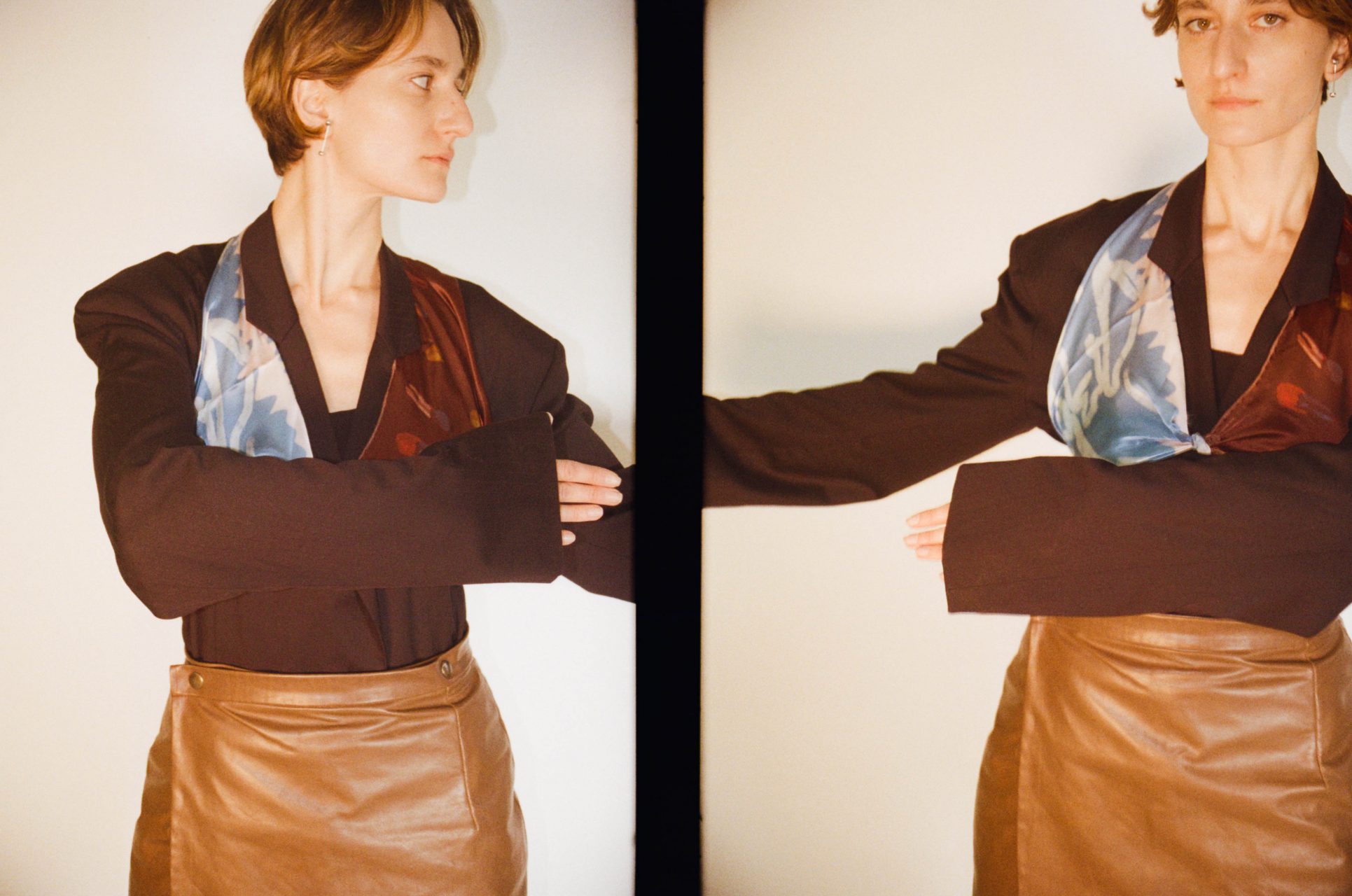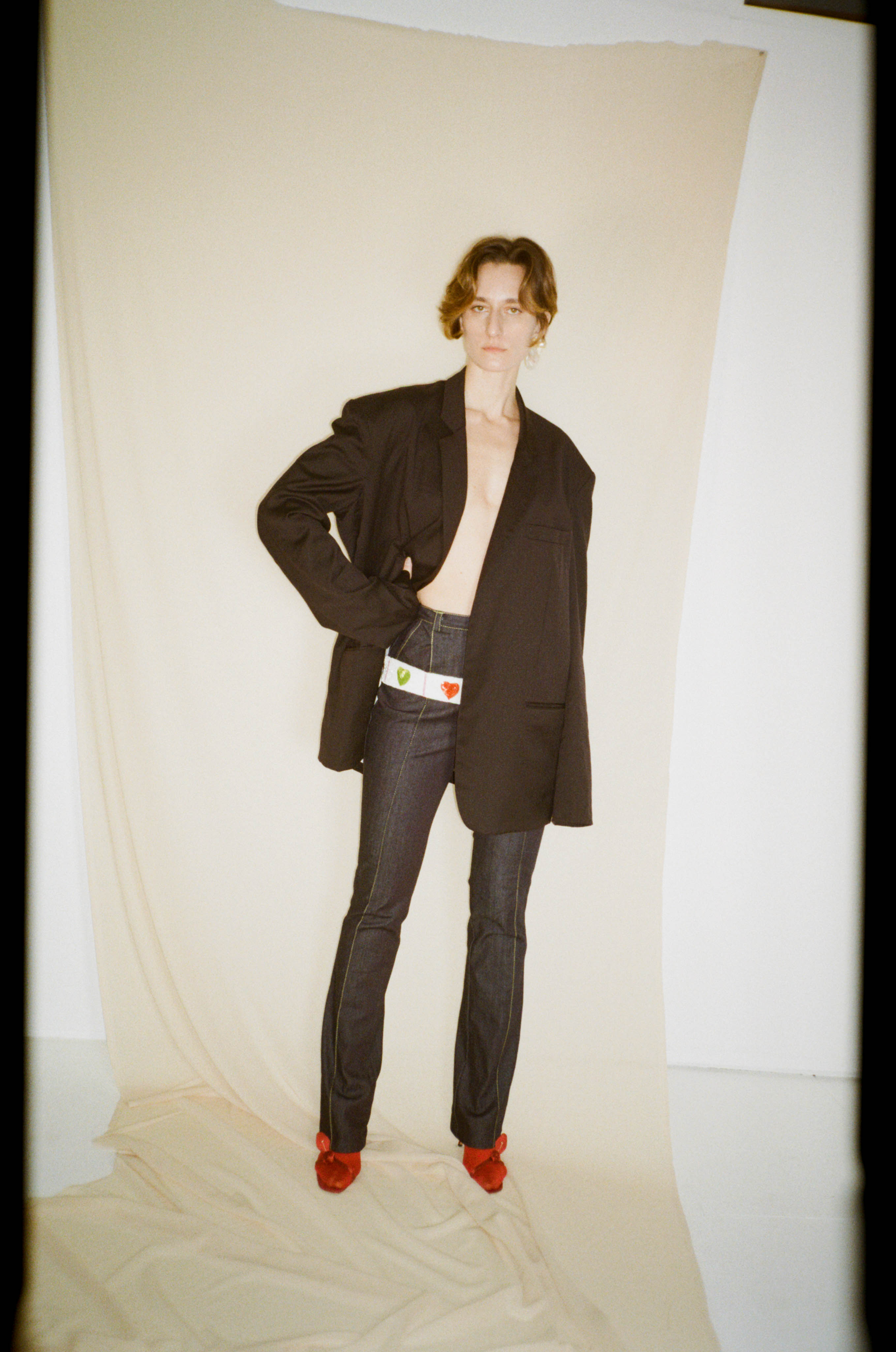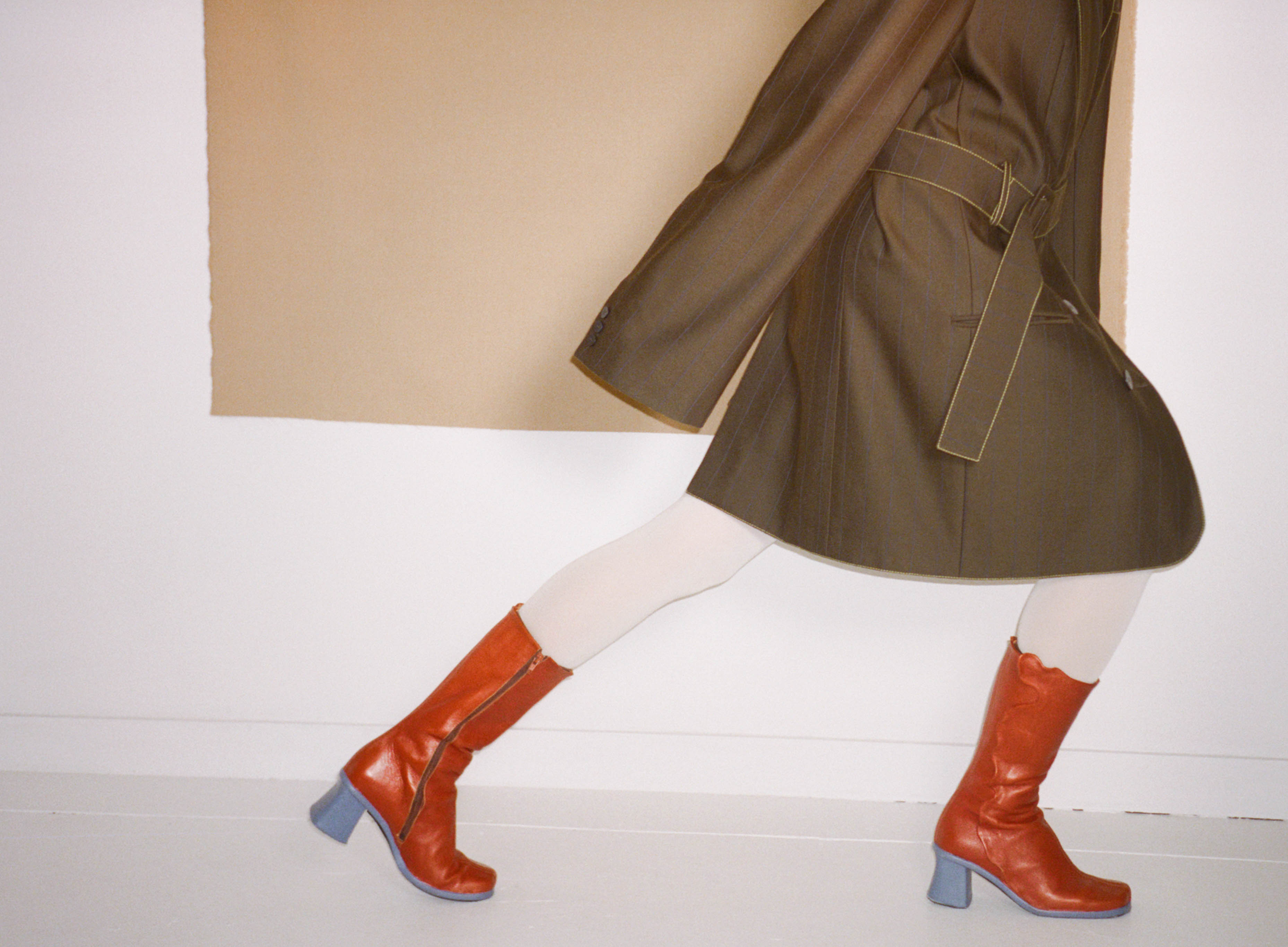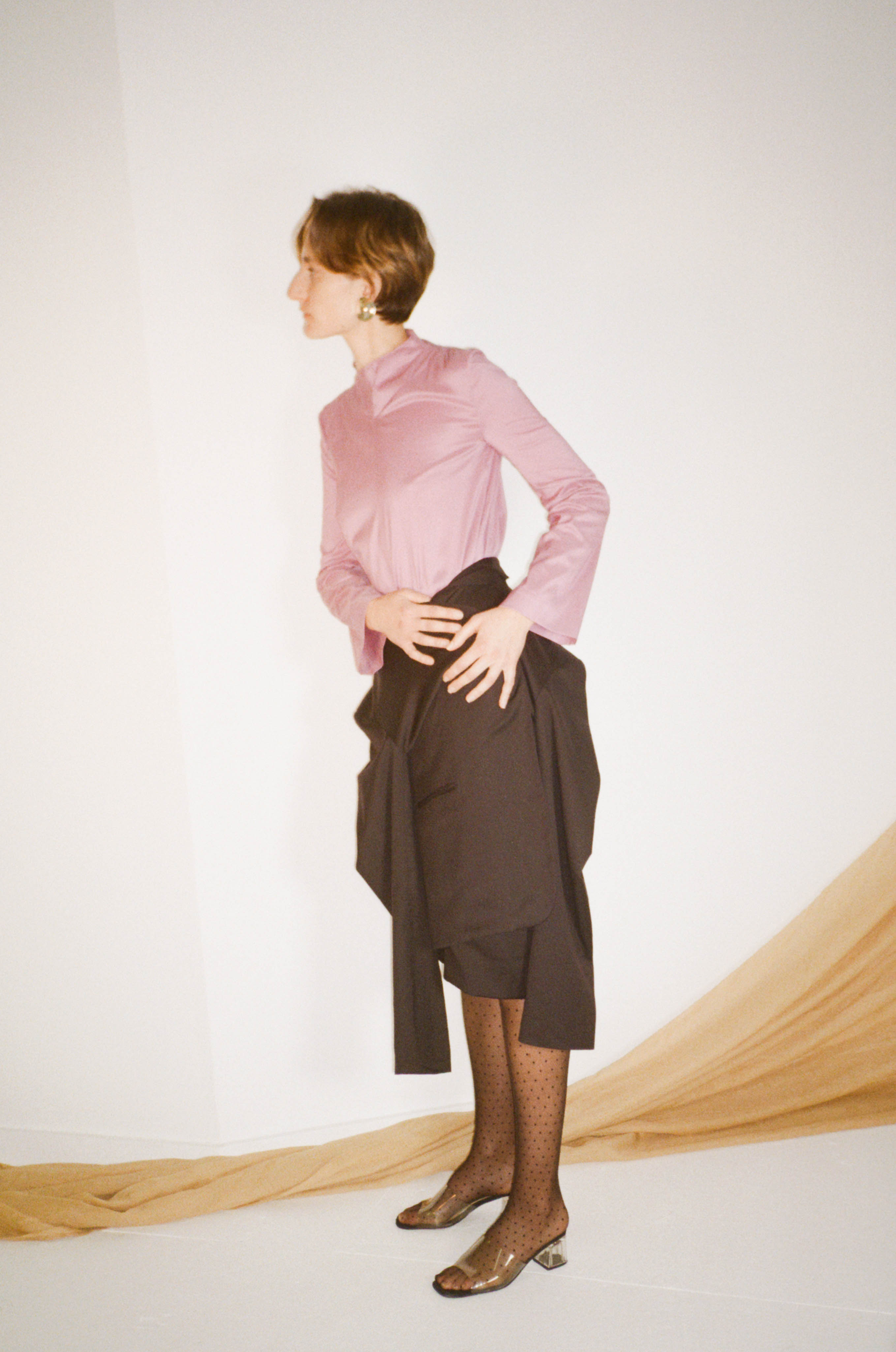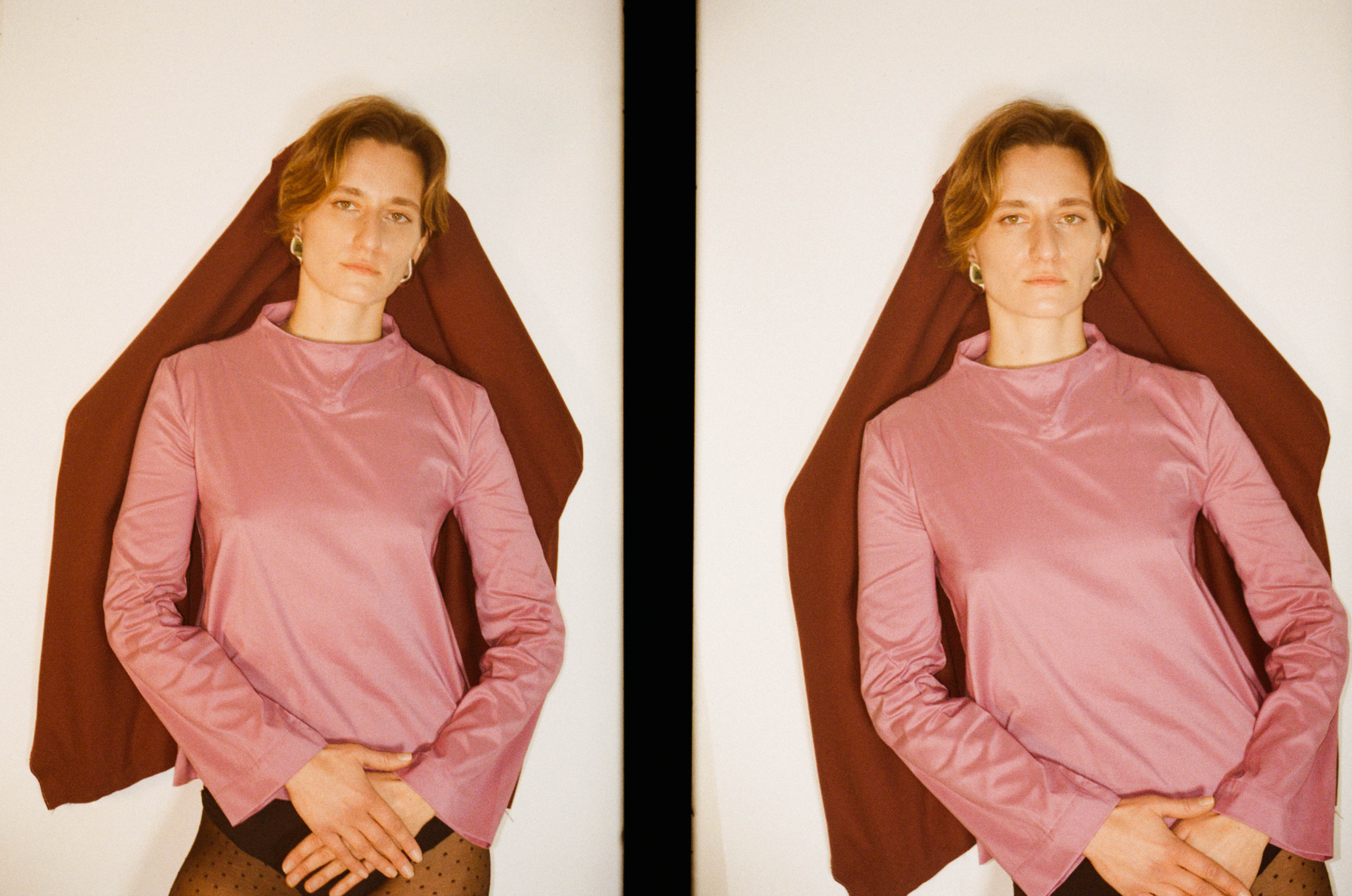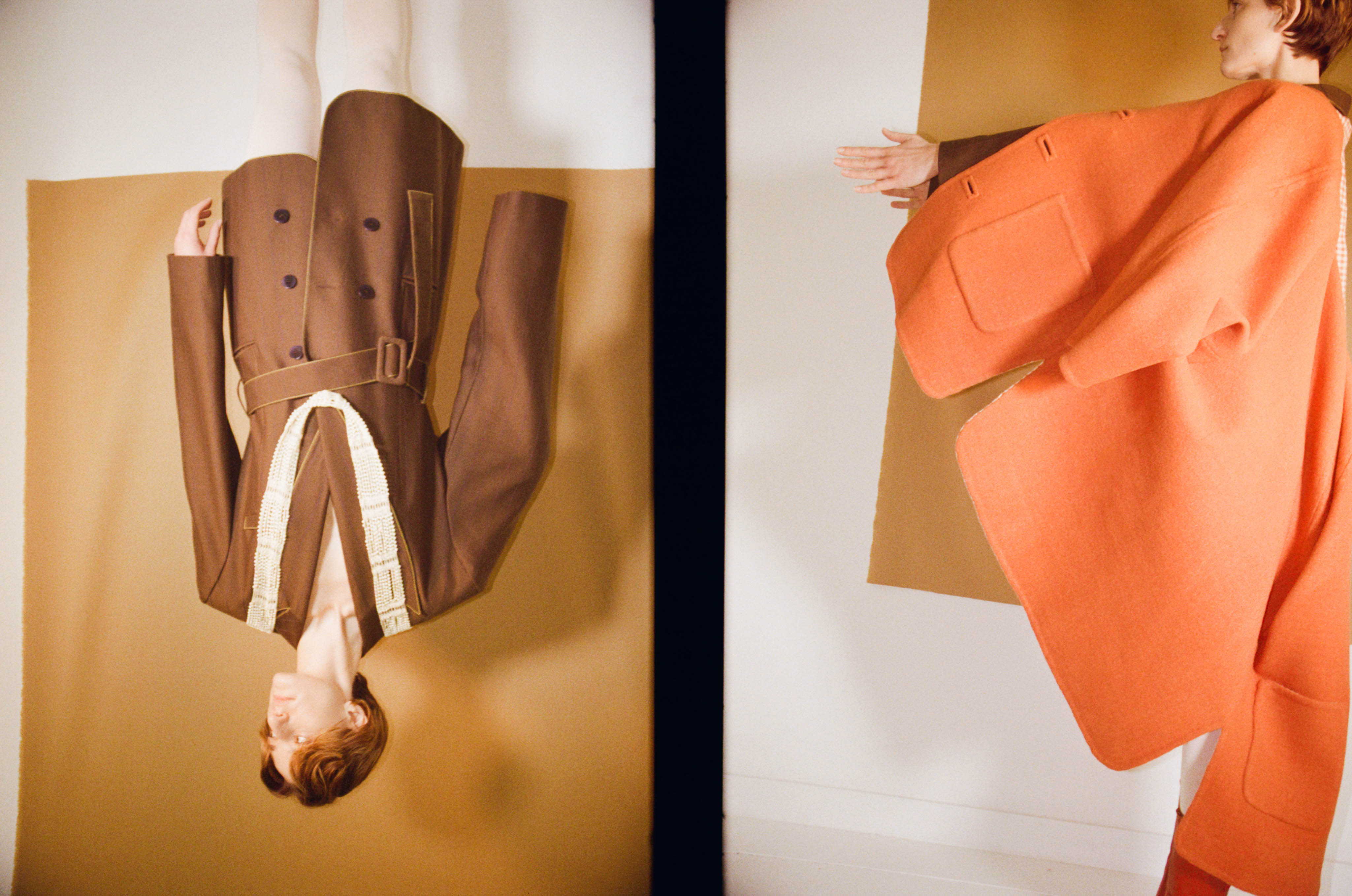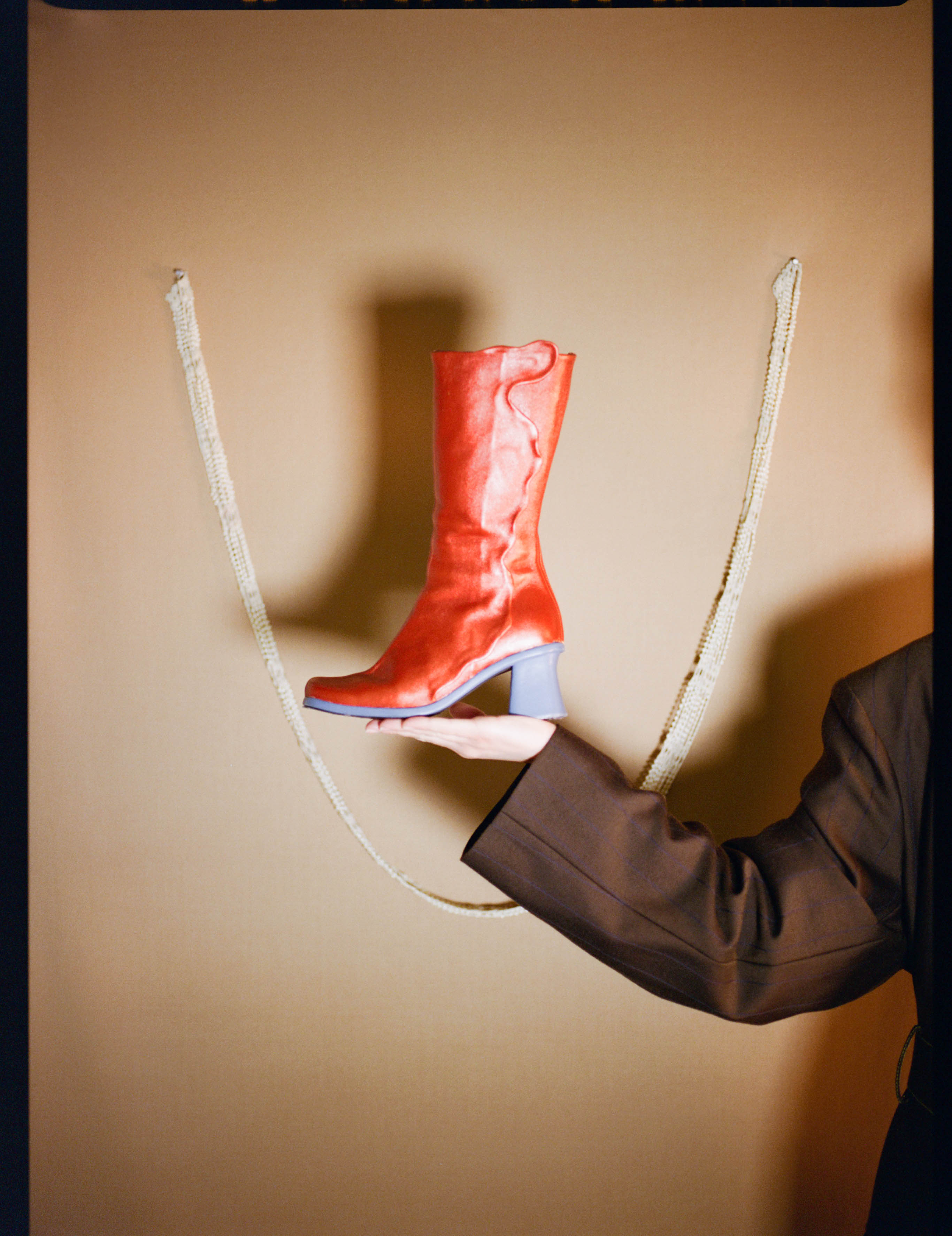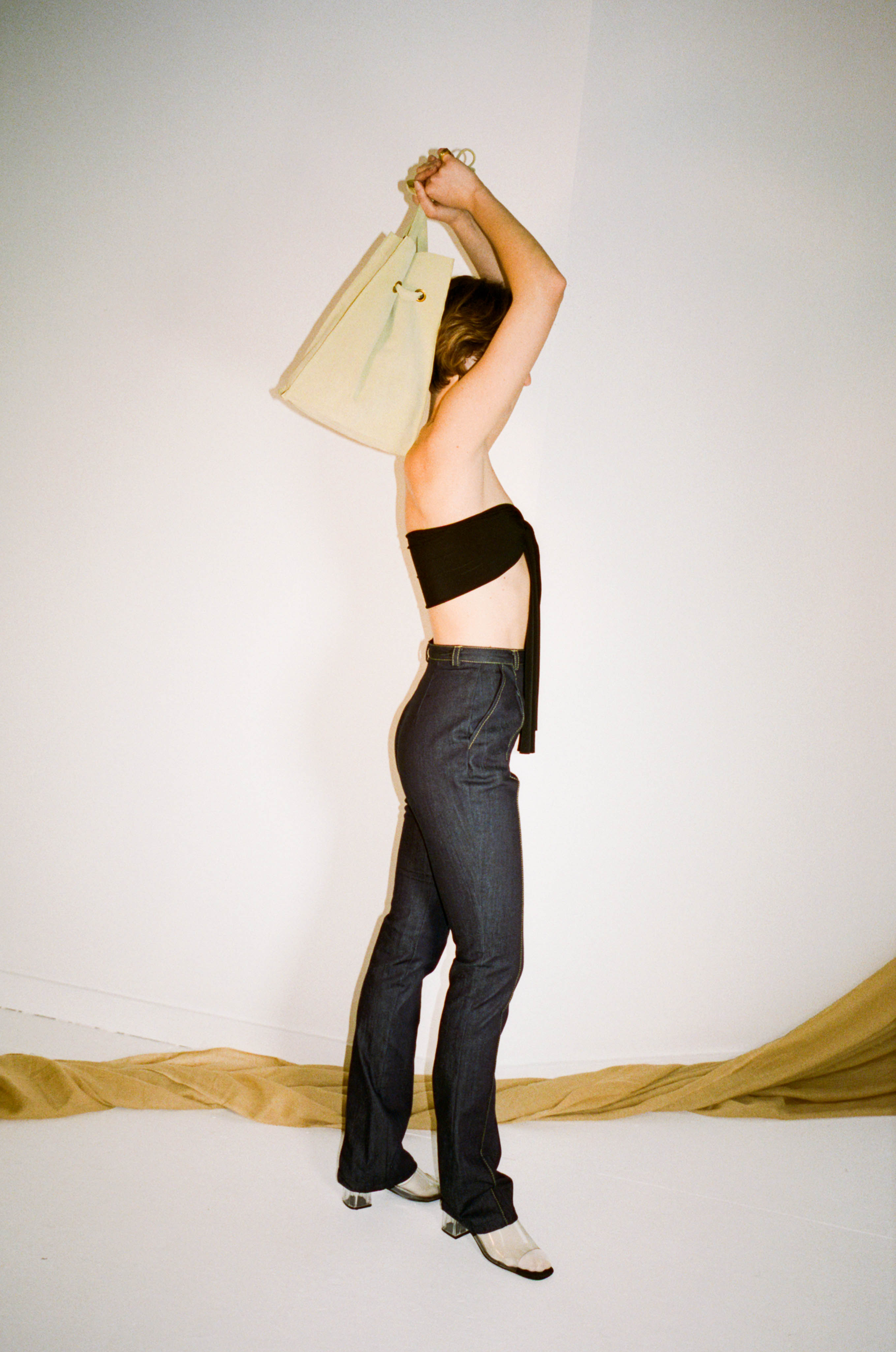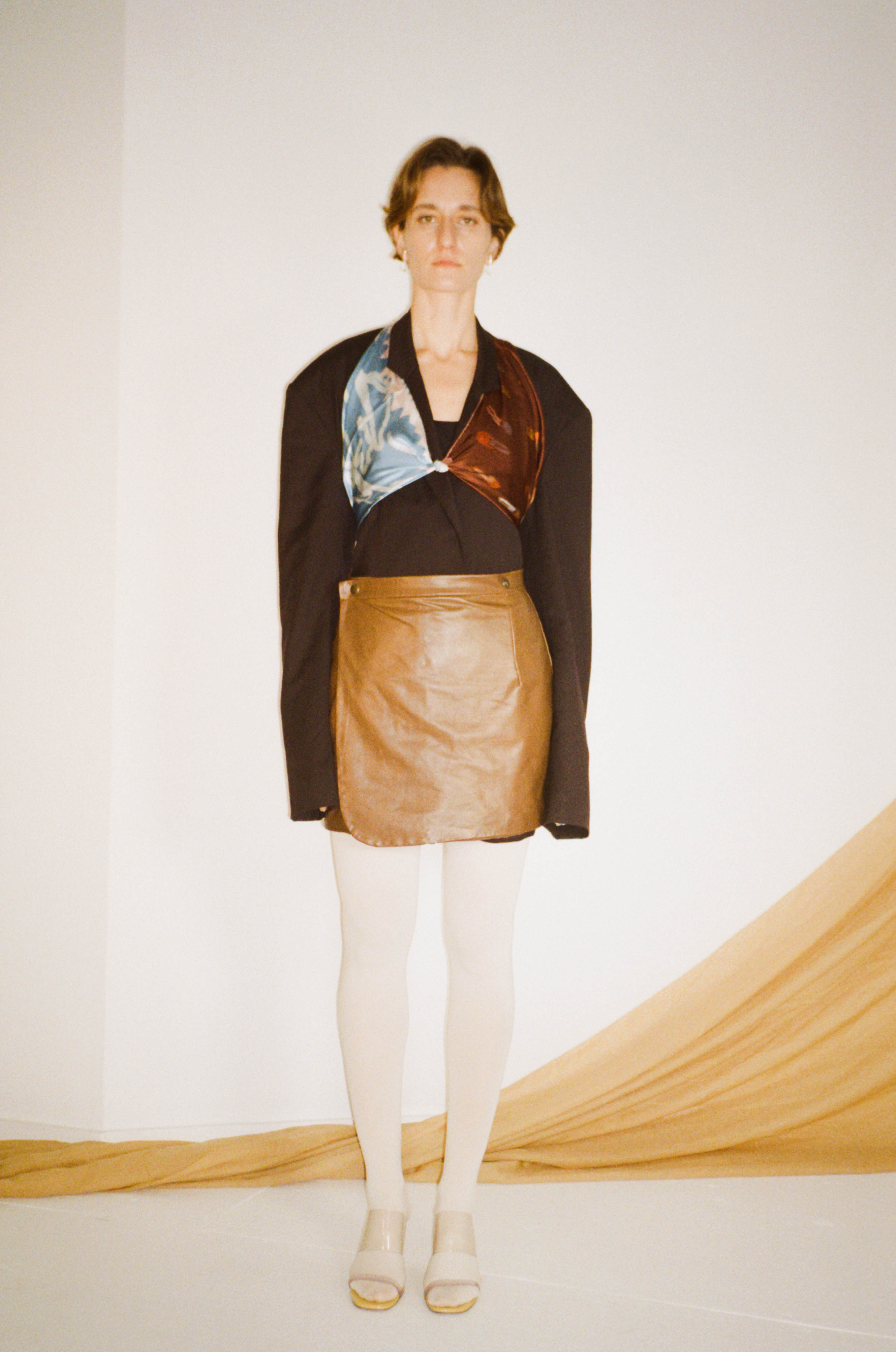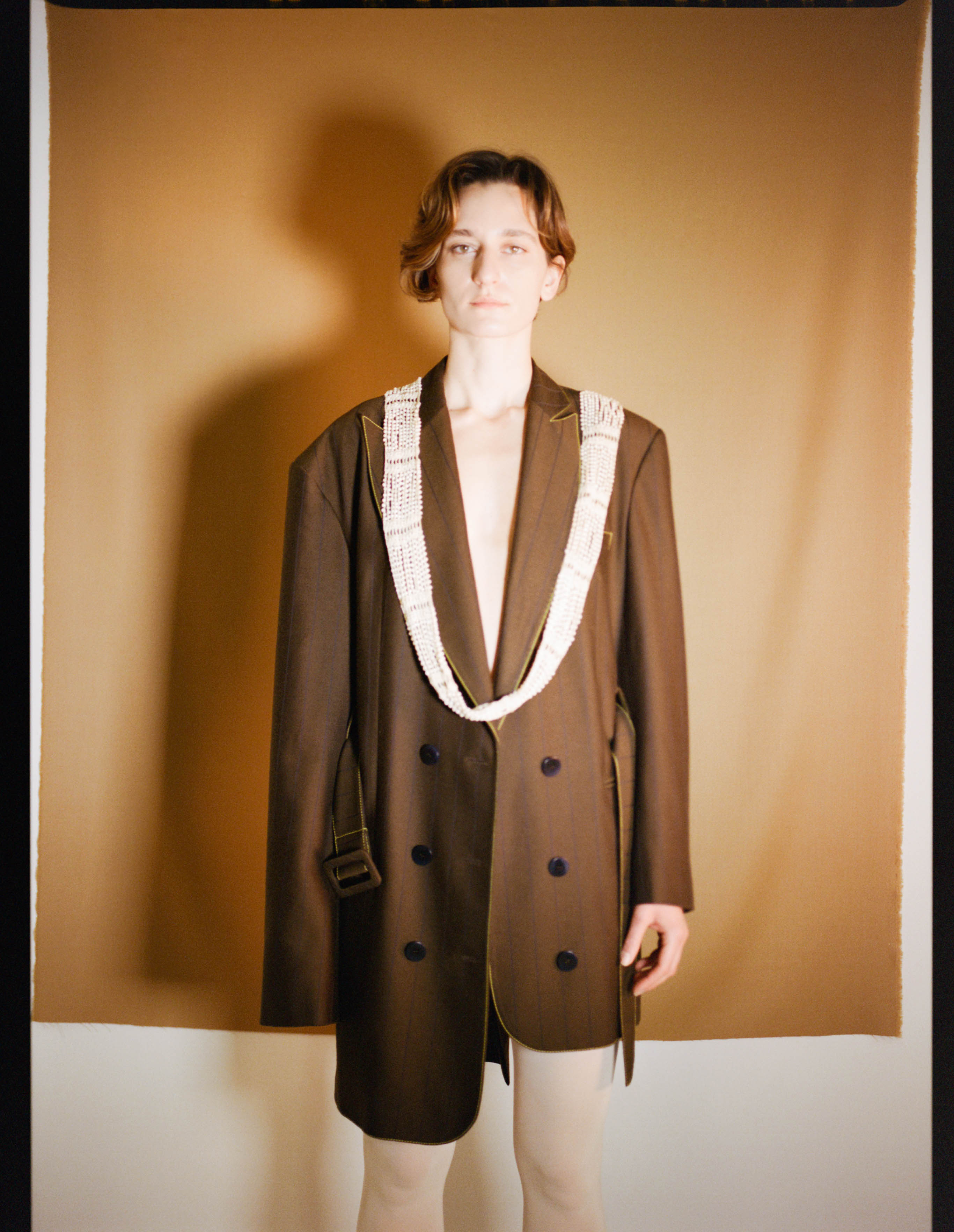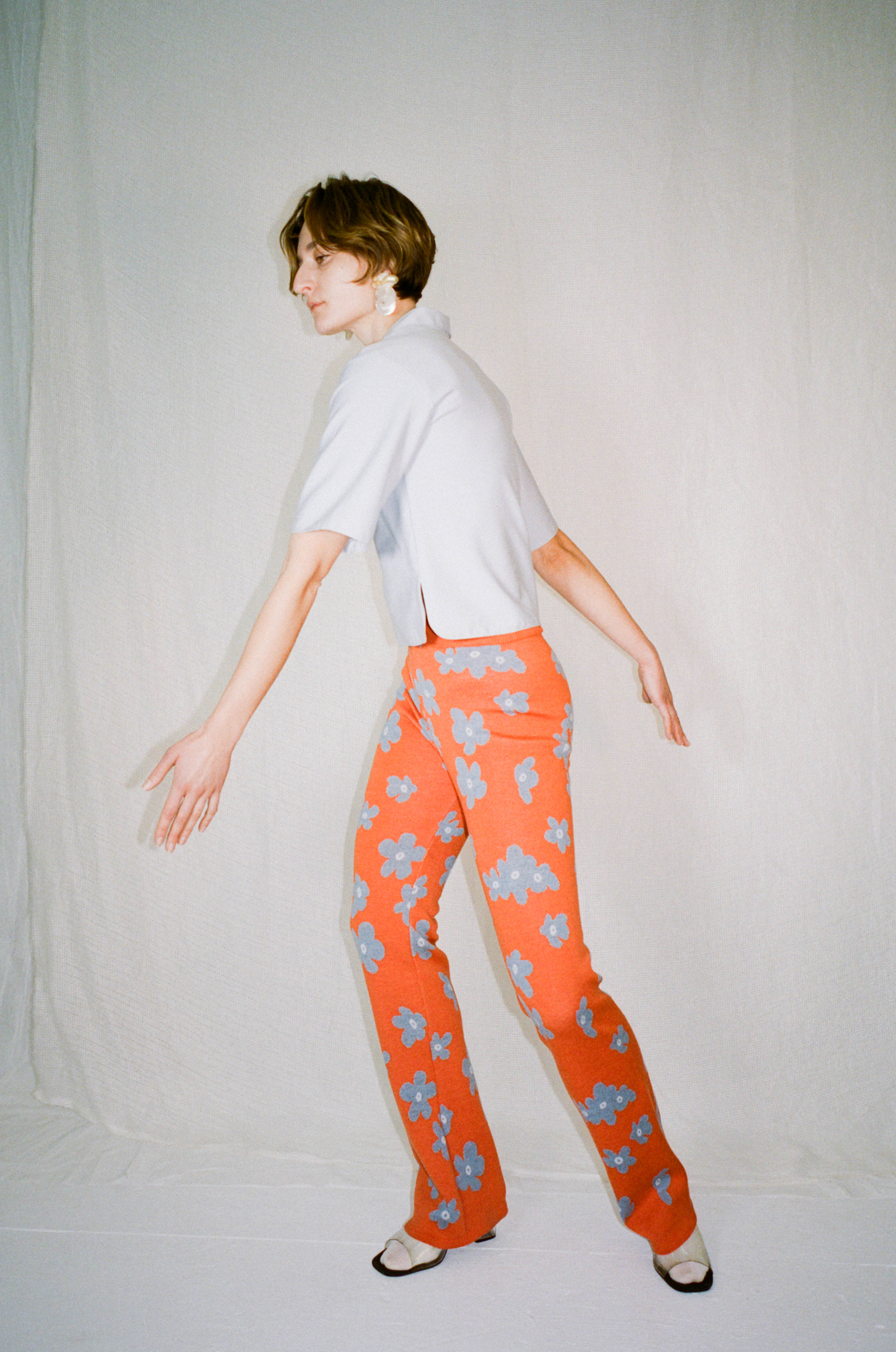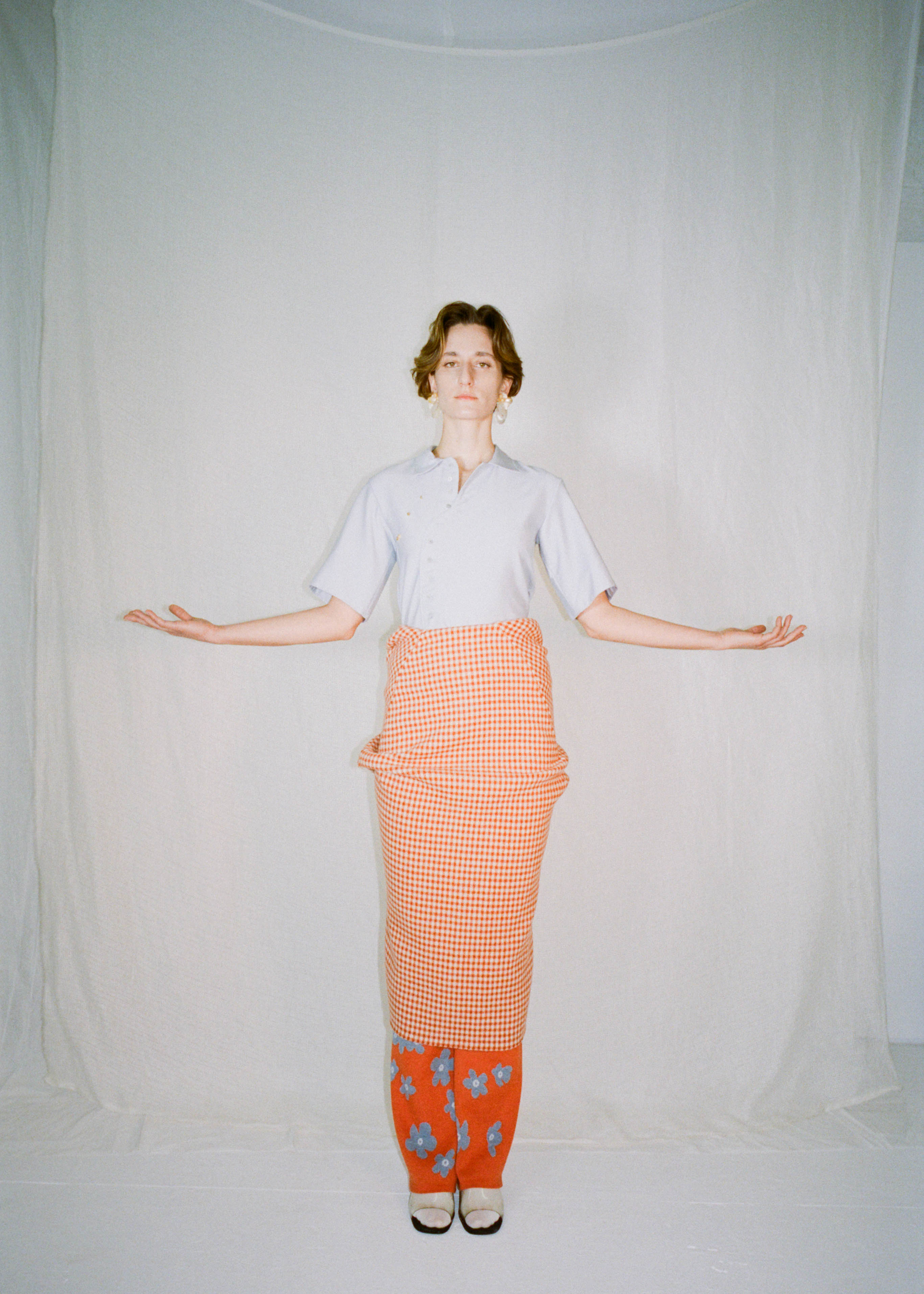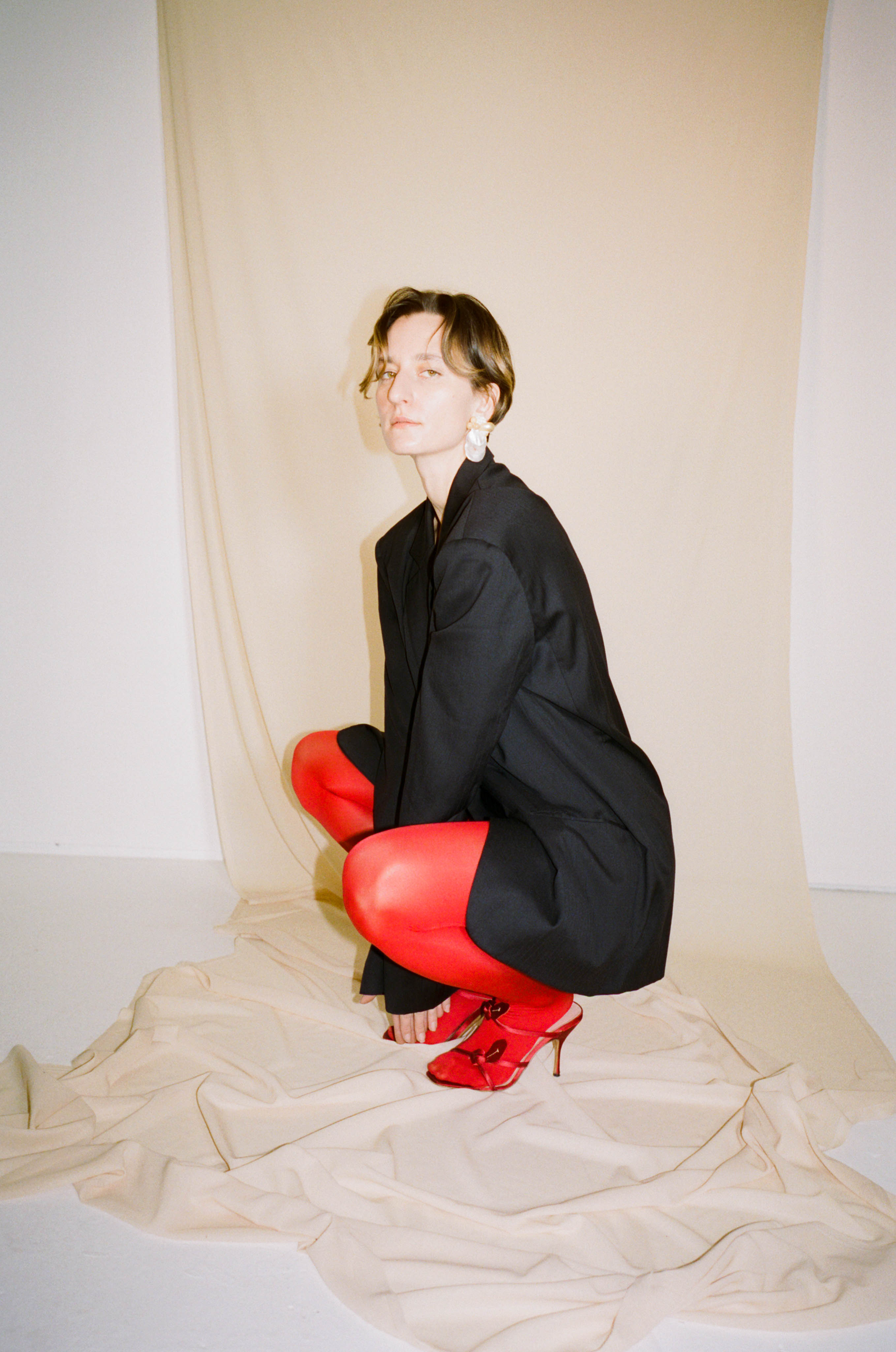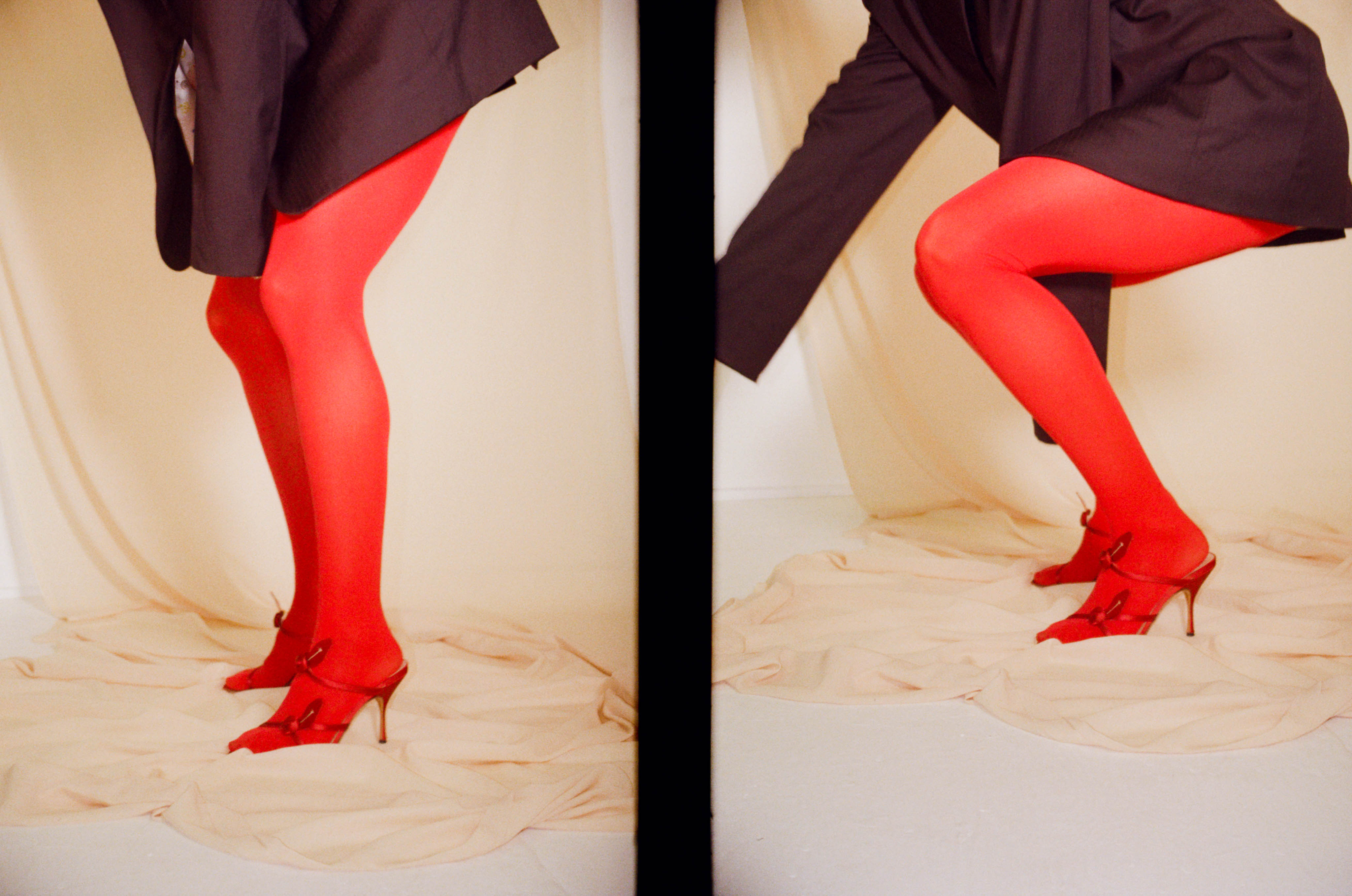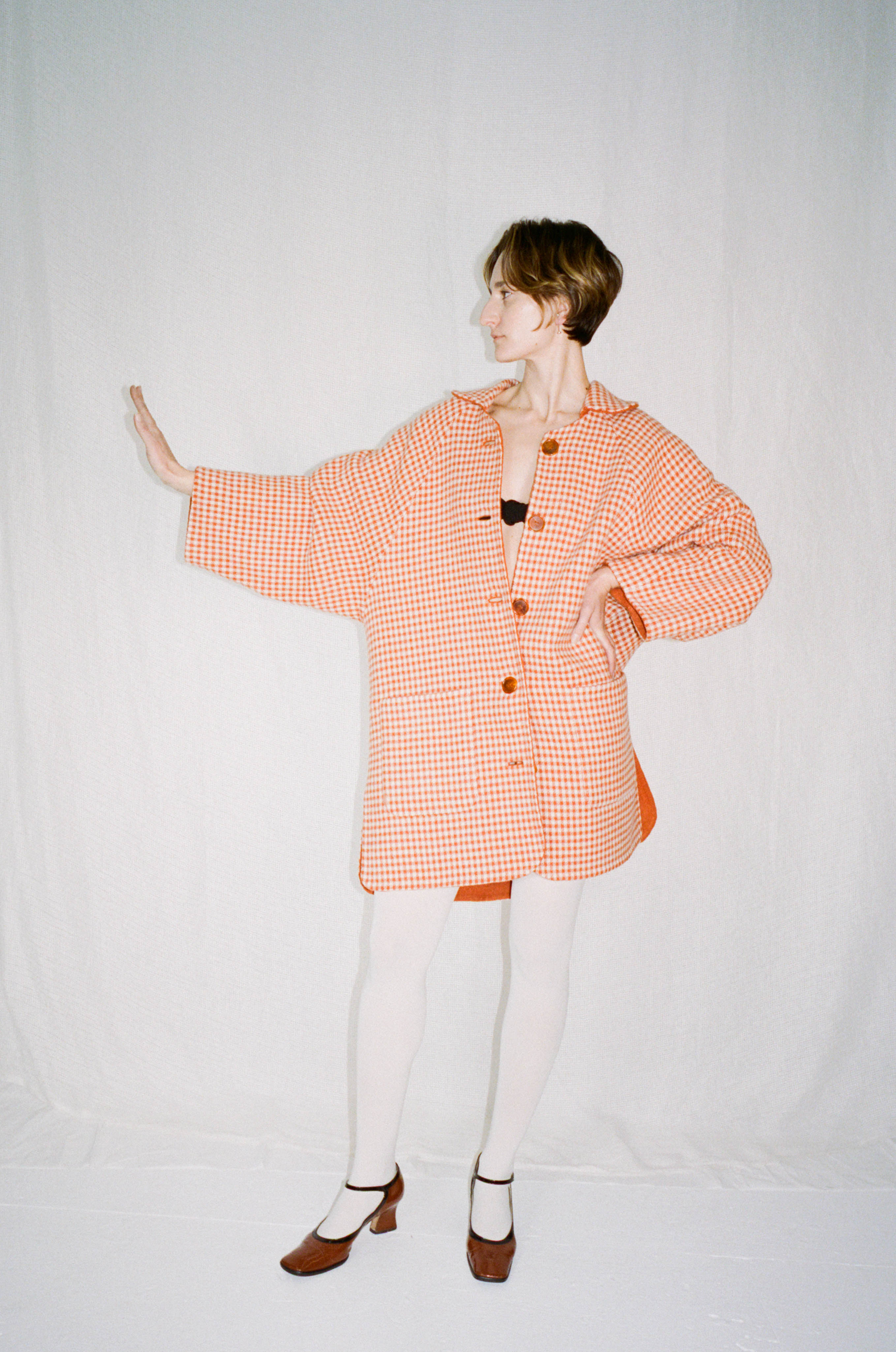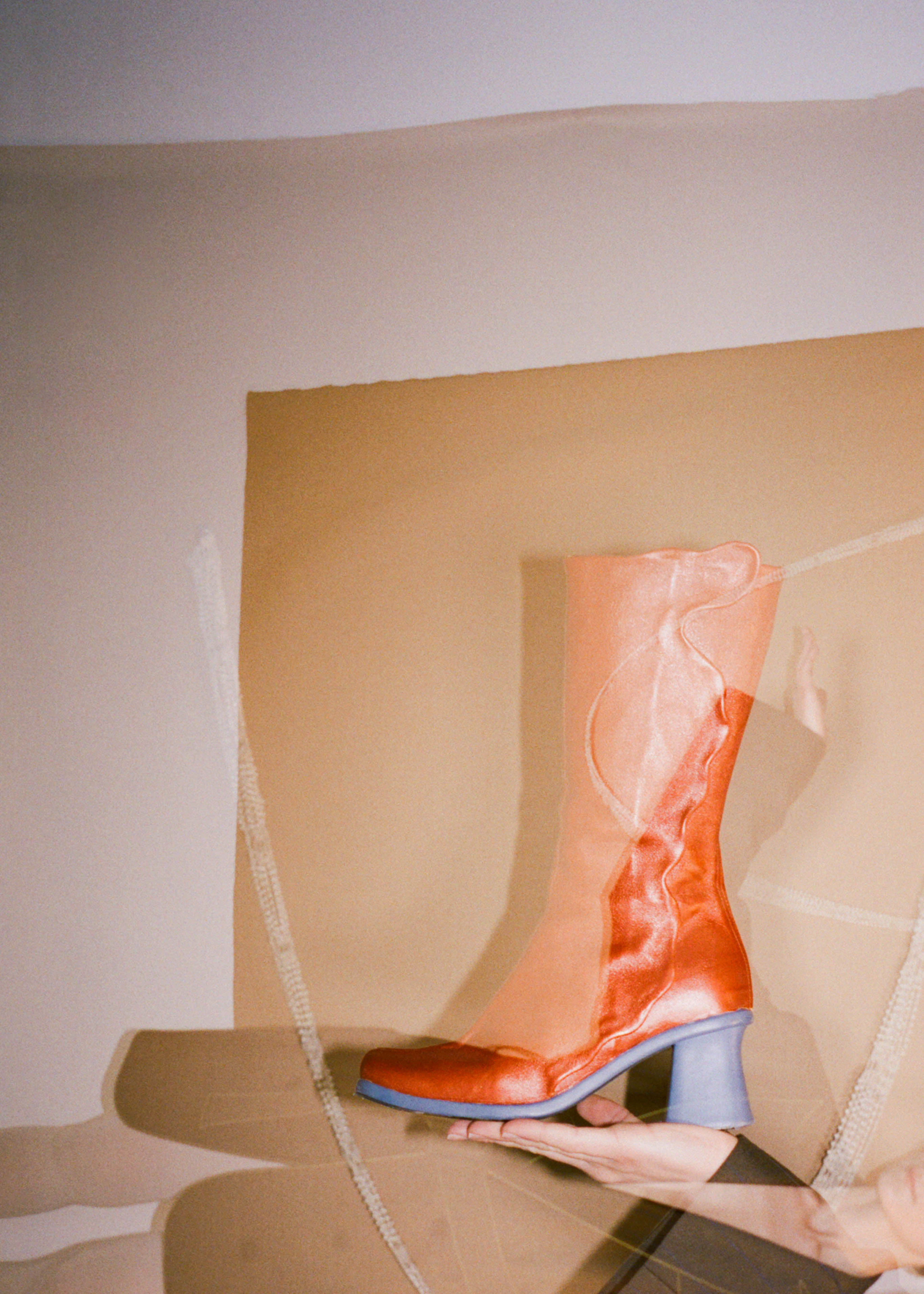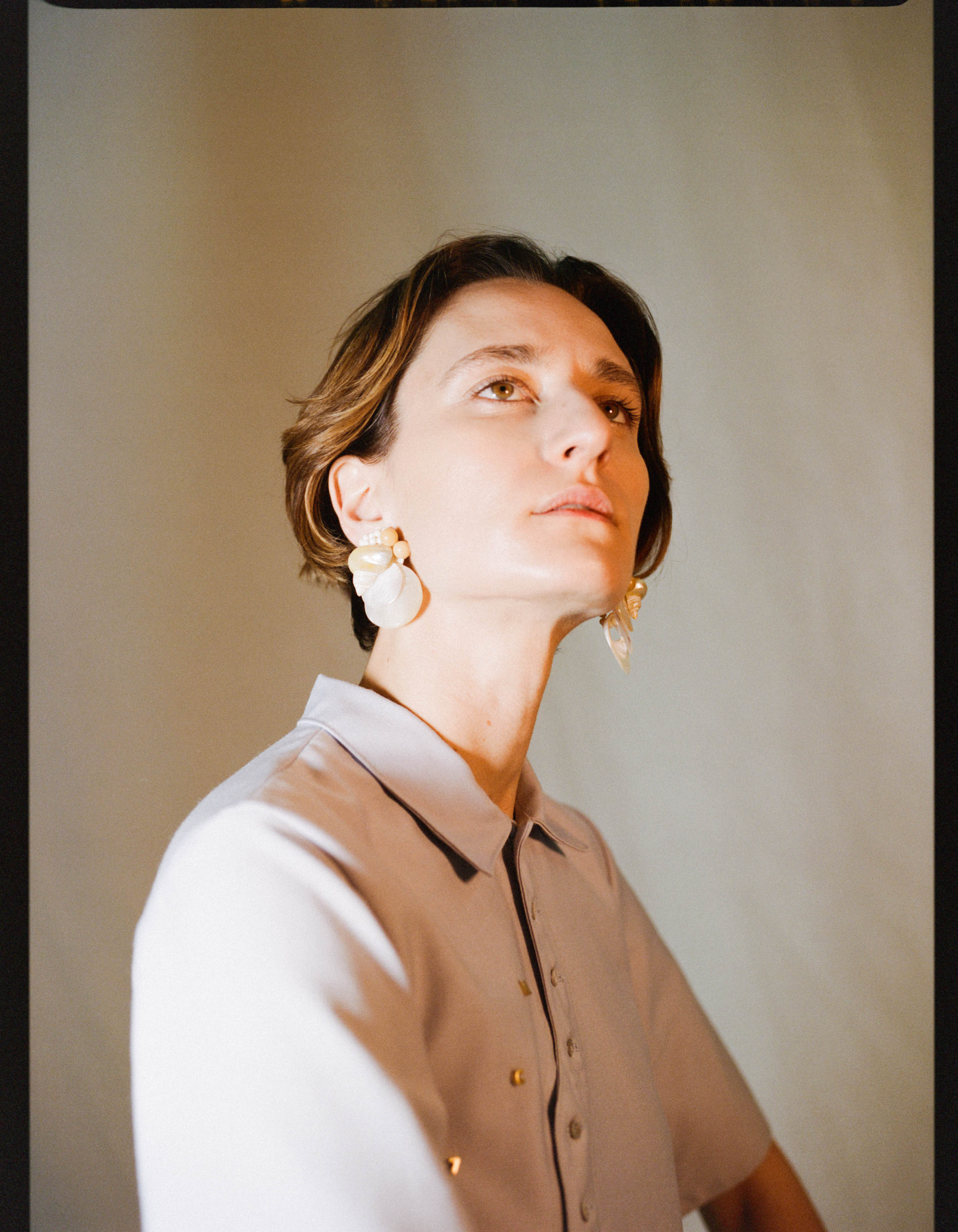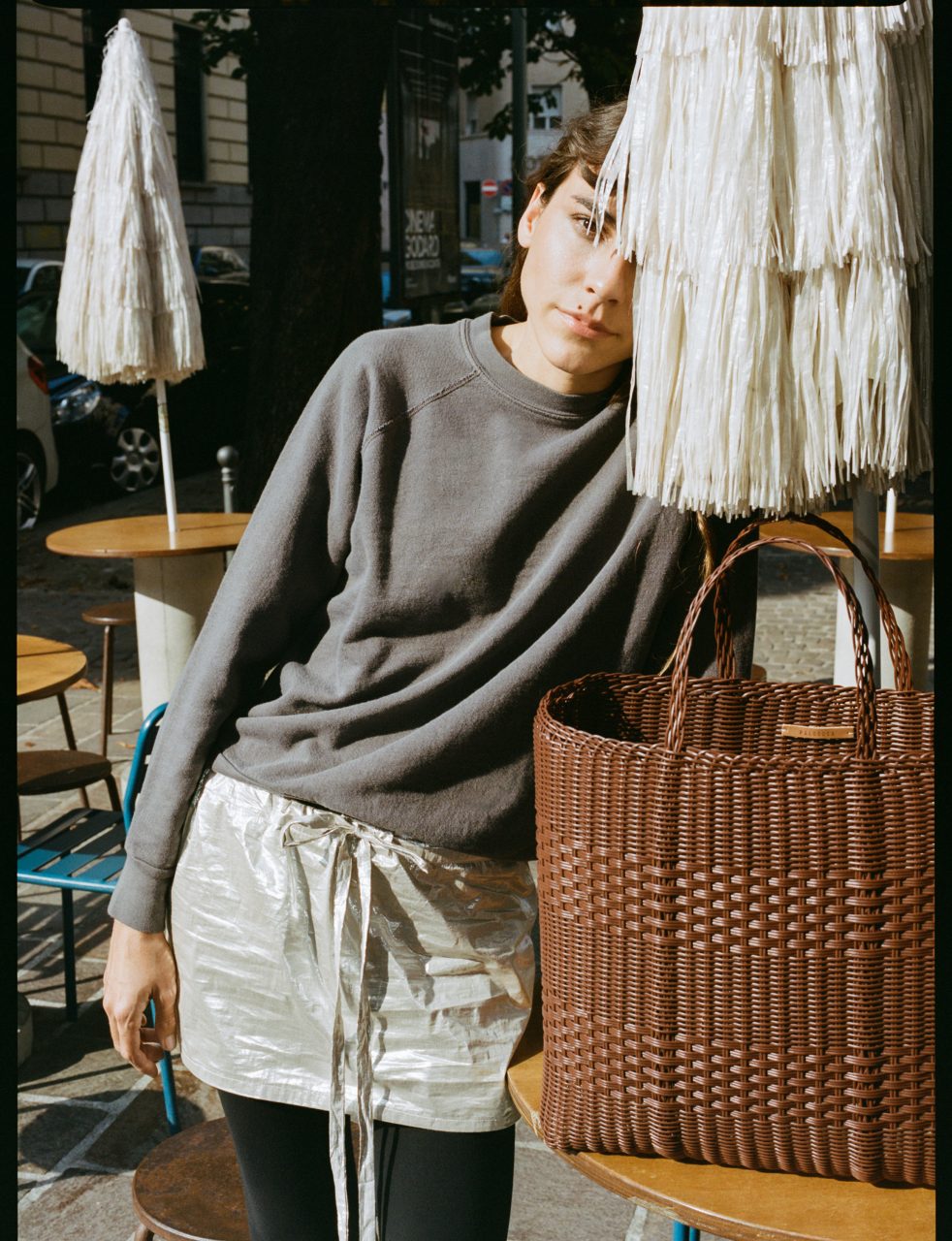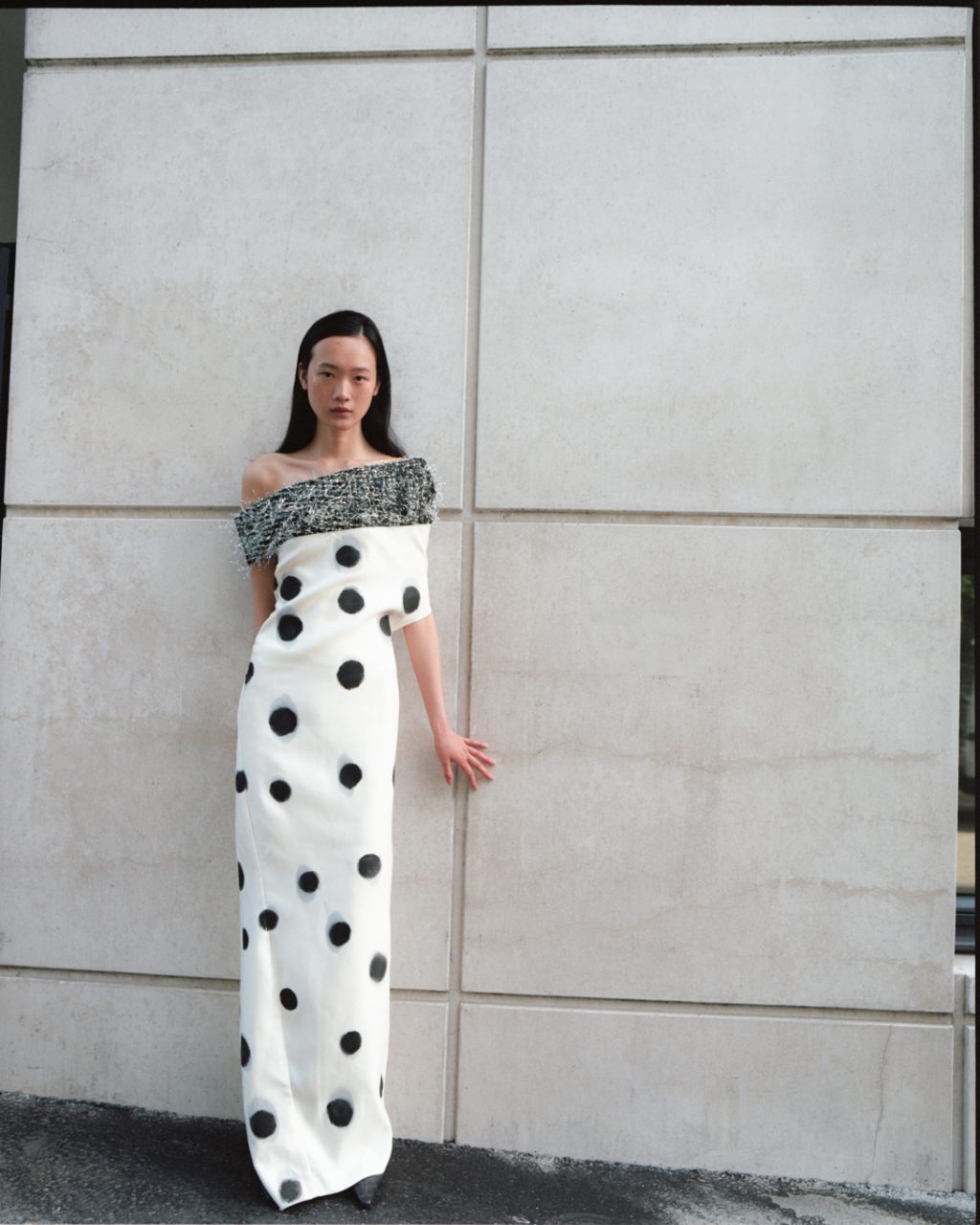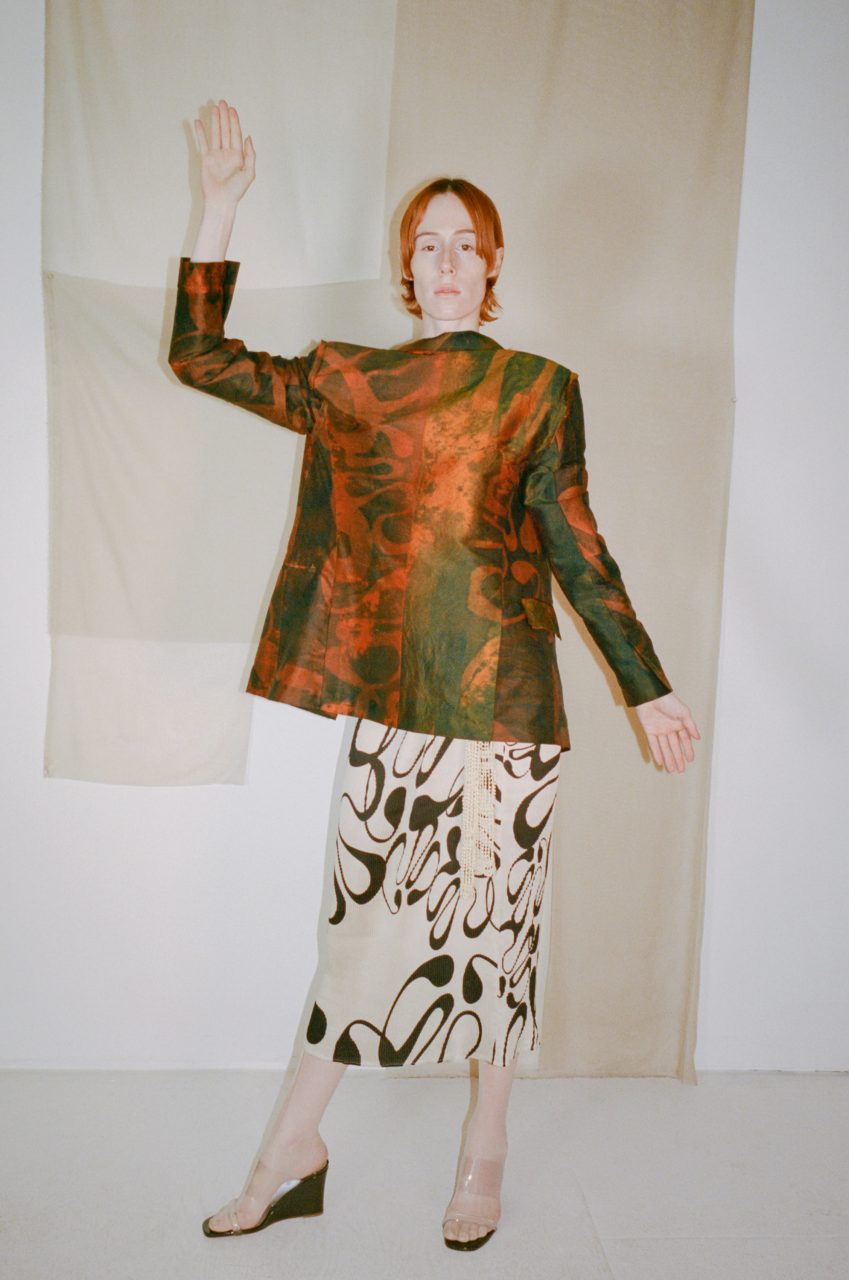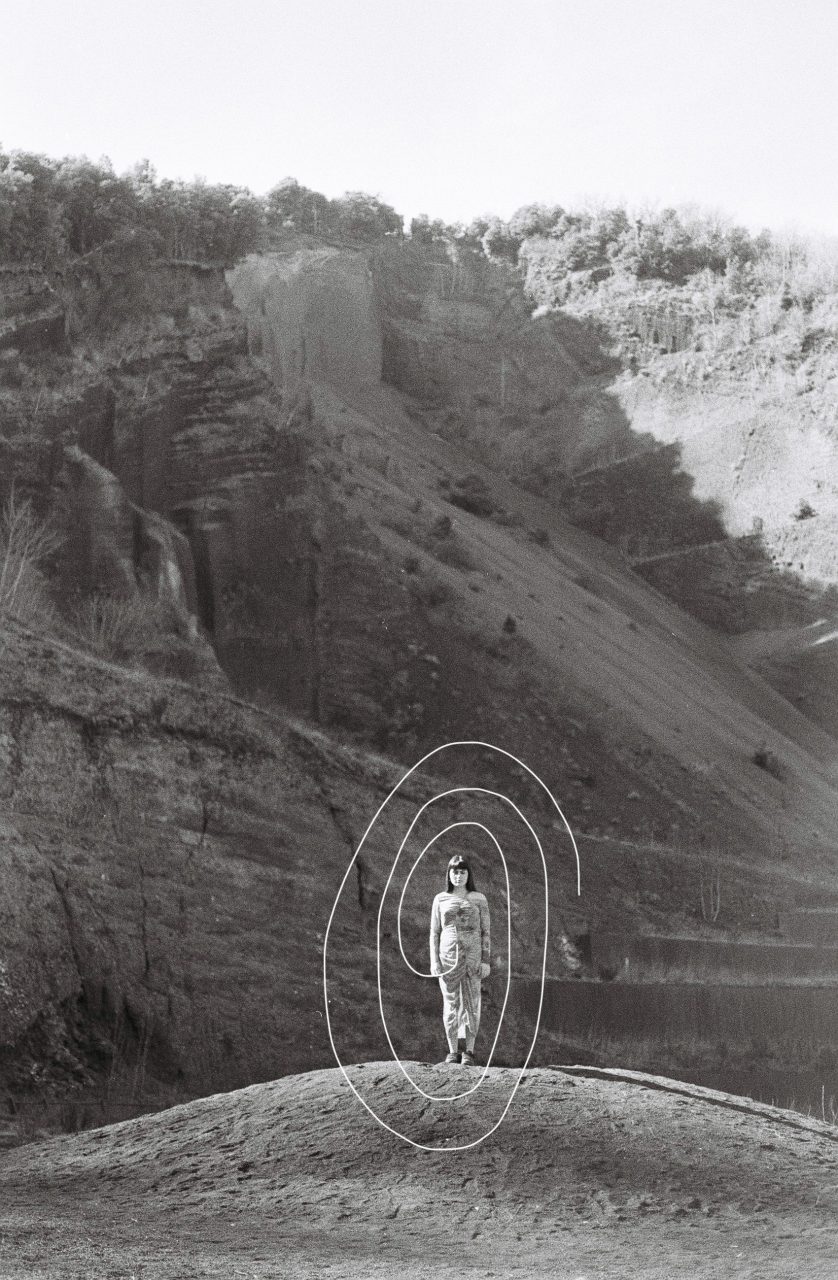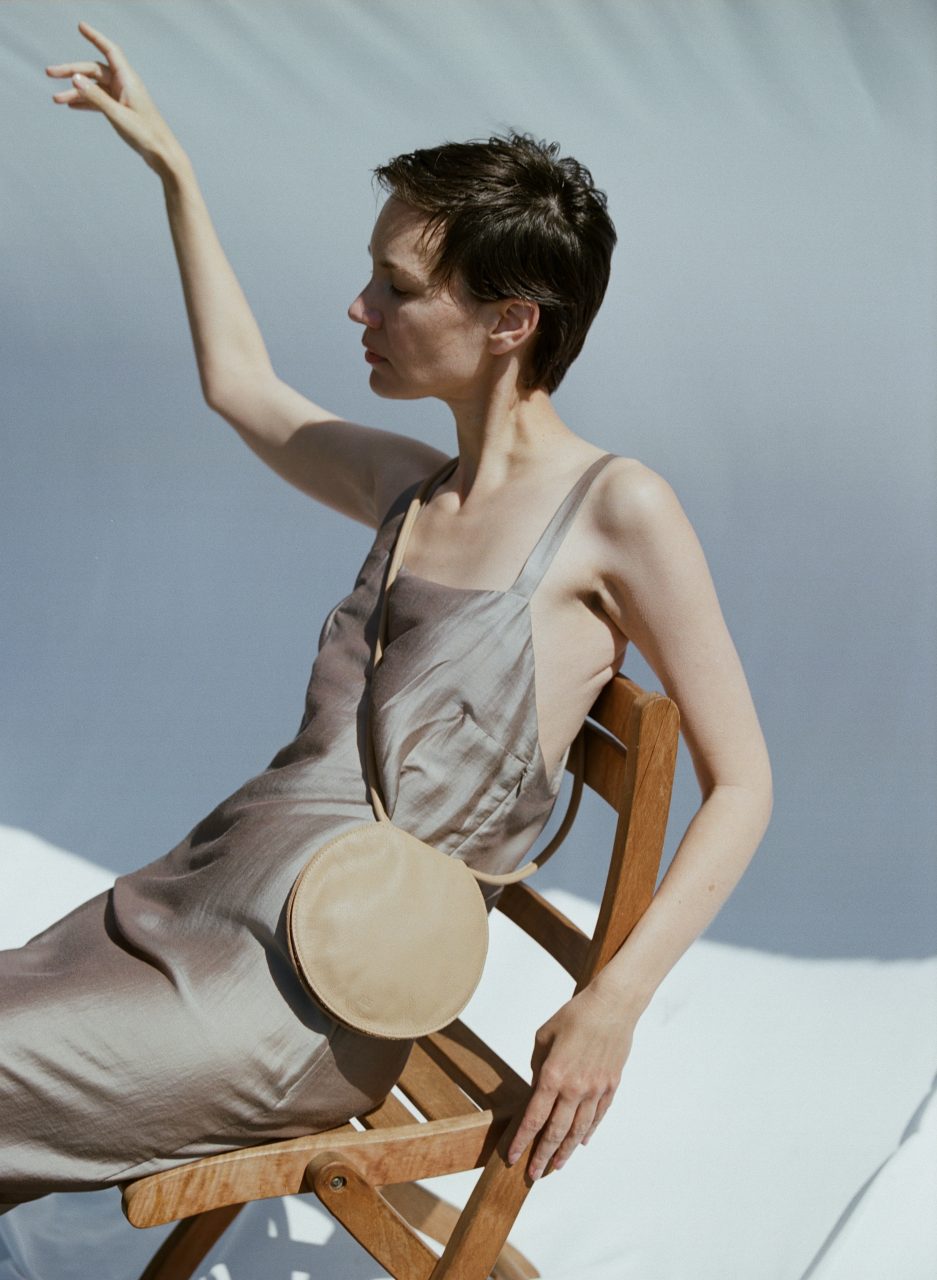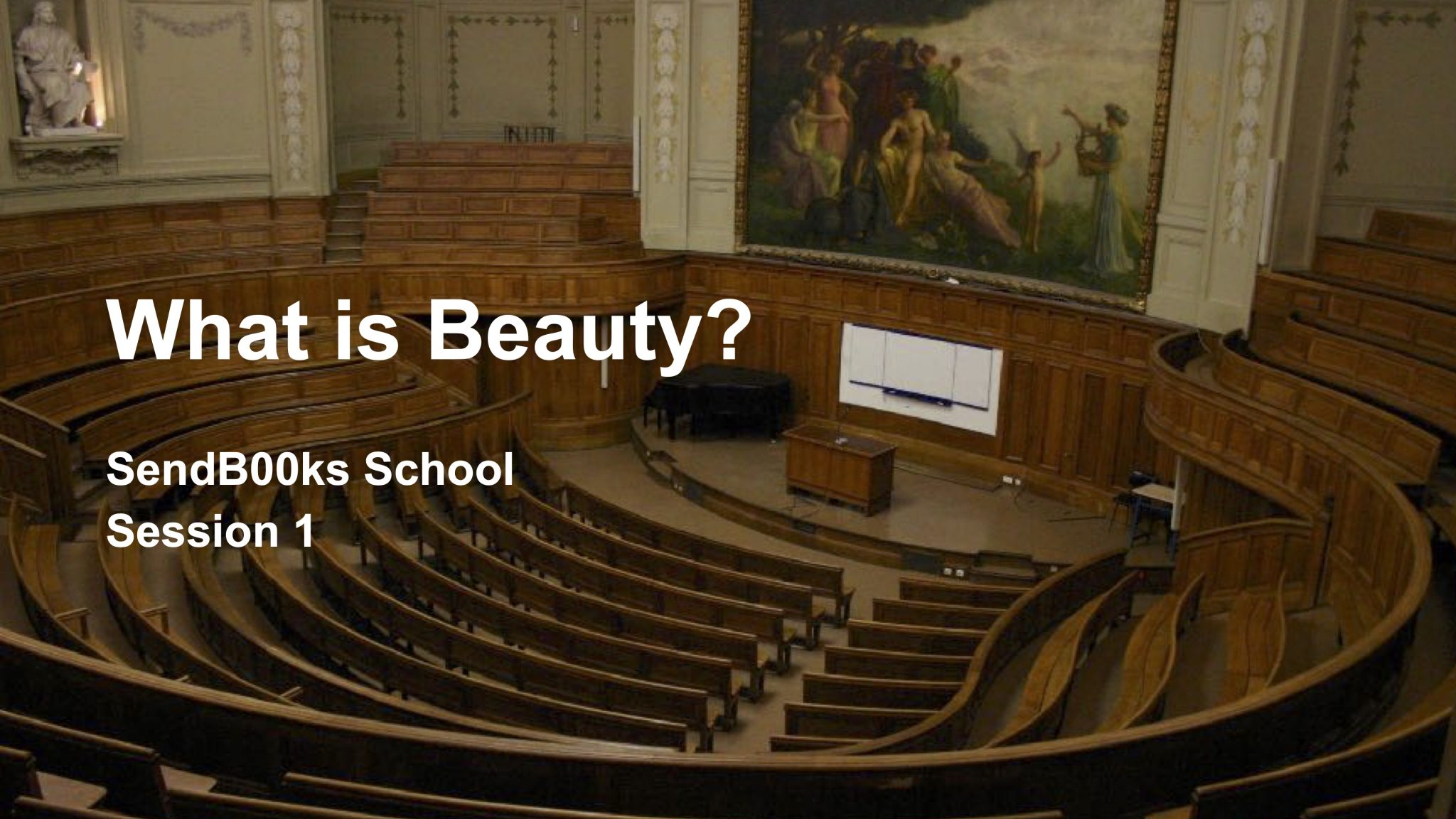Recent graduate Lisa Majuntke is a designer with her first full collection on the horizon; working alongside established New York based stylist and consultant Dione Davis, they discuss their beginnings in the industry and their future hopes for it, their recent shoot with Andrés Altamirano, as well as what a fair production process looks like to them…
In conversation with Lisa Majuntke and Dione Davis
How did each of you arrive to your current positions in fashion?
Lisa: I have always been interested in clothing, garments, fashion. Observing how people dressed, influenced the way I saw them. Once I realised my path would be in the creative sector, I attended a high school with an emphasis on the arts. Next to fashion I illustrated a lot, then I had to choose eventually and studied fashion design in Berlin.
Dione: I was always drawn to fashion as a form of escapism from suburban American life. Fashion wasn’t originally the career I had in mind, but I fell into it after ending a career in professional ballet. A case of mistaken identity landed me a job as an assistant to a stylist which led to others. Eventually I started working in house as a stylist for a brand and stayed for 8 years. Now I’m back on freelance life since August 2021.
What were some of your early influences, helping to shape your work now?
Dione: Having never felt like I belonged where I lived, I turned to the music scene in my town in Alabama. I’d see concerts all the time on the weekends and my friends would always be at thrift stores trying to find clothes we actually liked, versus what was offered in our region. Everything we wore had a bit of a DIY spirit that I feel still shapes my career to this day.
Lisa: I’m a very nostalgic person and tend to draw a lot from that. Which was also the starting point for my most recent collection.
Dione: I love manipulating clothing and irreverent takes on classic pieces. I’m eating from the same menu, but with better ingredients.
How have you repurposed clothing and textiles in the past?
Dione: In 2020 I started working and appearing in an instagram live series weekly, on how to build a thoughtful wardrobe. That led to creating more content. My first case of repurposing textiles was taking my button down shirts and turning them into brand new pieces of clothing. They could be skirts, beach coverups, two shirts combined could turn into wearable art.
I had a desire to turn things on their head after working with the same product for so long. Styling the same blazer for a few years makes you want to fold it up and make the model wear it as a hat by the end. I shared my video because I wanted people to realize the power of having wardrobe staples because it’s sustainable, and fiscally responsible. Another way was taking old worn down sweaters and turning them into sweater vests because they were having a moment.
Lisa: Because a lot of my inspiration comes from the past, I have always had a natural tendency to seek out and reuse dead stock fabrics. It goes without saying that there is a huge problem in the industry with the wastefulness of resources. I find it fascinating to be working or wearing fabrics and pieces that originated in a different time. Not just from a technical perspective but also the historical and societal implications at the time of their production. When handling these fabrics you can literally feel transported.
Dione: Lisa and I are clearly on the same page. Working with a piece of history always feels so powerful. You can feel all of the love and care and attention to detail it took to make something. It takes a village to execute a beautiful piece of clothing and items from the past still hold that energy.
What spurred this collaboration?
Lisa: I’ve been following Dione’s and Andrés’ work for some time. They worked on a lot of projects that I love and during my last trip to New York City a mutual friend connected us. I feel we share an aesthetic vision and seeing how our project turned out makes me very happy.
Dione: Andres reached out to me about working with Lisa and he sent me photos of the clothing and it was right up my alley. The colours seemed like a trip back in time, but simultaneously reaching forward which is always a line I’m trying to straddle in my work. It was a great fit and I love the images. Along with photography, Andrés is very gifted with curating the right team for a collaboration.
What defines a truly circular production process to you? What are the key tenets?
Lisa: In an ideal situation materials are sourced sustainably, production is fair and local and we are able to produce efficiently, on an on demand basis. Although what I’m describing should be common practice, the industry is still far behind and very slow to set a new sustainable standard. It’s very important to me that clothes are produced and designed with an appreciation of the material, so they can be worn for a long time and be passed on to future generations.
Dione: All of Lisa’s points about production and smart design are key. I appreciate it when brands have collections that are evergreen and meant to be worn forever or are all season. That’s why I was excited to work on this project because this is exactly what I want the future of fashion to look like. Slow, thoughtful, evergreen, but still interesting.
You can do everything right on paper and still not be truly circular until you start thinking about a circular brand ethos as well. It doesn’t mean everything needs to be quiet and utilitarian either. On the opposite end, there are plenty of brands out there that are using circular production but are full of highly polarising trends and make four collections a year.
I struggle with brands that succumb to the fashion calendar because they are contributing to a level of consumption that is unhealthy to our industry. If everyone made less and sold more, the industry would be in a healthier place, rather than as broken as it is.
Lisa, tell us more about your first full collection?
My idea was based on a photo series I found. There is a carefree, lightheartedness to the images that provides escapism. I was interested in how we collectively share memories across generations and preserve their vibrancy in a way that even allows young people to form an emotional connection to them.
The materials I used are mostly natural: a variety of wool, cotton and leather, while the buttons are made out of nacre and wood. For the knitting, I used dead stock wool yarn that the school provided us with. My collection aims to acknowledge and pay tribute to the typical palette of forms, patterns and fits while recharging it with a contemporary take.
Describe the art direction you had in mind Dione?
I was following their [Andrés and Lisa’s] lead, so stylistically I wanted the person viewing the shoot to not have any idea what season it was supposed to be for, or what decade.
I pulled styling references from various decades to tie in the colour palette that really does offer modern nostalgia. There was 90’s Prada, 1970’s seashell earrings, a beaded belt from 2021, and something made on the day of [the shoot] – Lisa brought these beautiful silk scarves, which I turned into a bikini to layer over the blazer, adding to that confusion and tension.
What are some of the bigger shifts you would like to see happen in the industry?
Lisa: I think it’s crucial that the industry finally shifts to more sustainable, and less profit-oriented practices. And as a recent fashion school graduate, I think there is also a need for discussion about fair representation in the industry and who is given a voice.
Dione: I do wish that retailers would assume some of the responsibility held in contributing to overproduction. The major players over order and under deliver. Brands shouldn’t produce anything they can’t sell or take back at the end of the season because stores will send back what doesn’t sell. The big box stores don’t even offer a solid point of view anymore that’s suitable for a healthy business for these brands anyway.
Buyers should be more open about delivery windows. The world looks different now. Also, the industry would be much more fresh and innovative if design teams actually got time to rest, rather than churning out the next collection 24/7. Creatives can’t exist unless they are also living a life, and many designers don’t get that luxury.
– words by Reeme Idris
–

